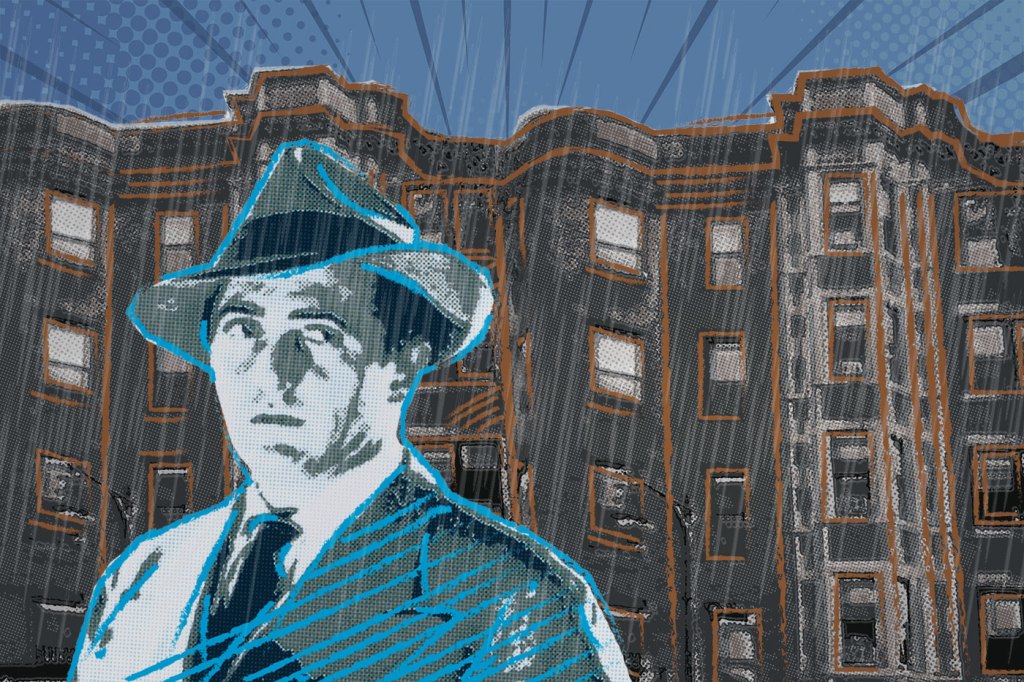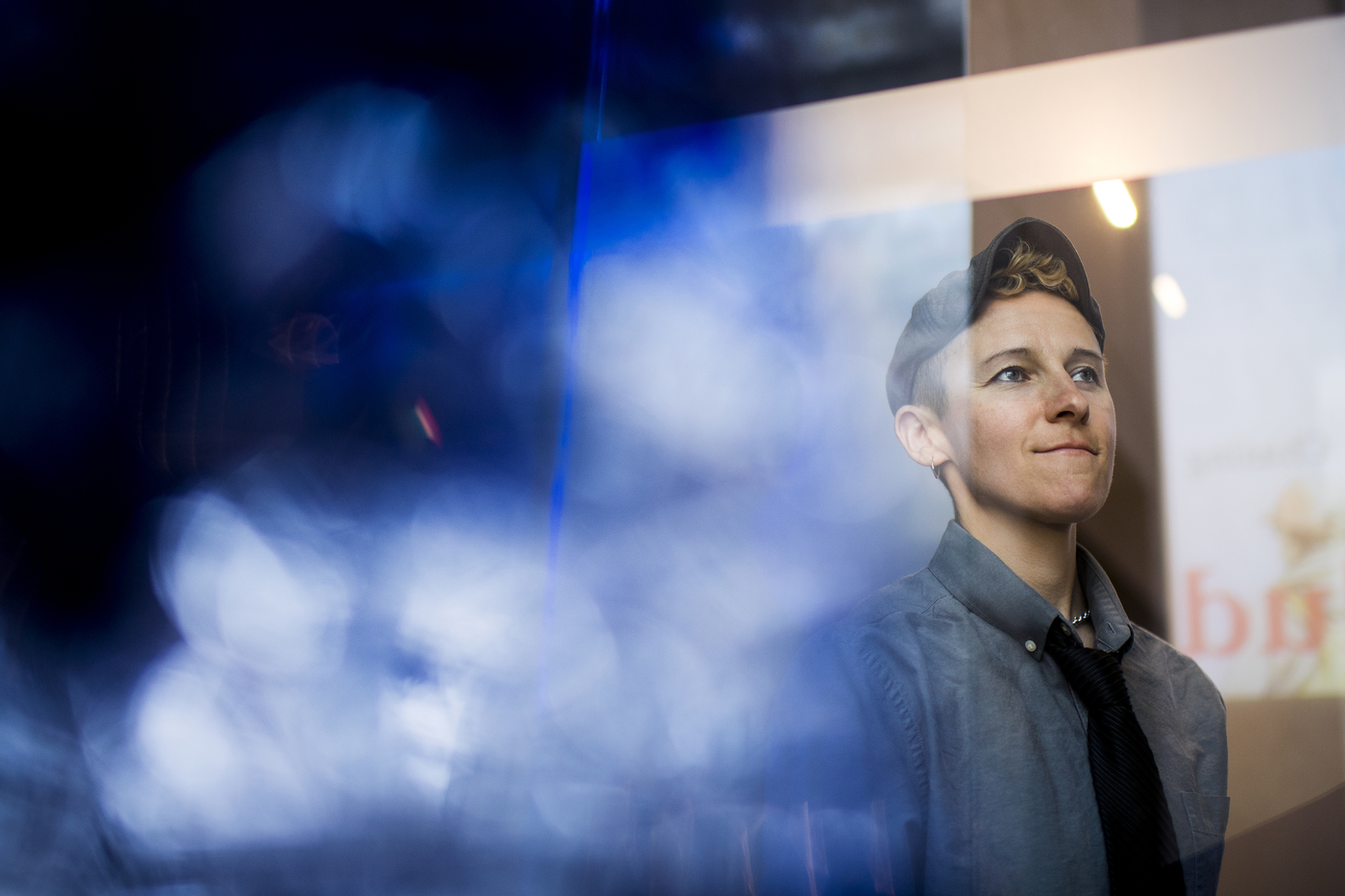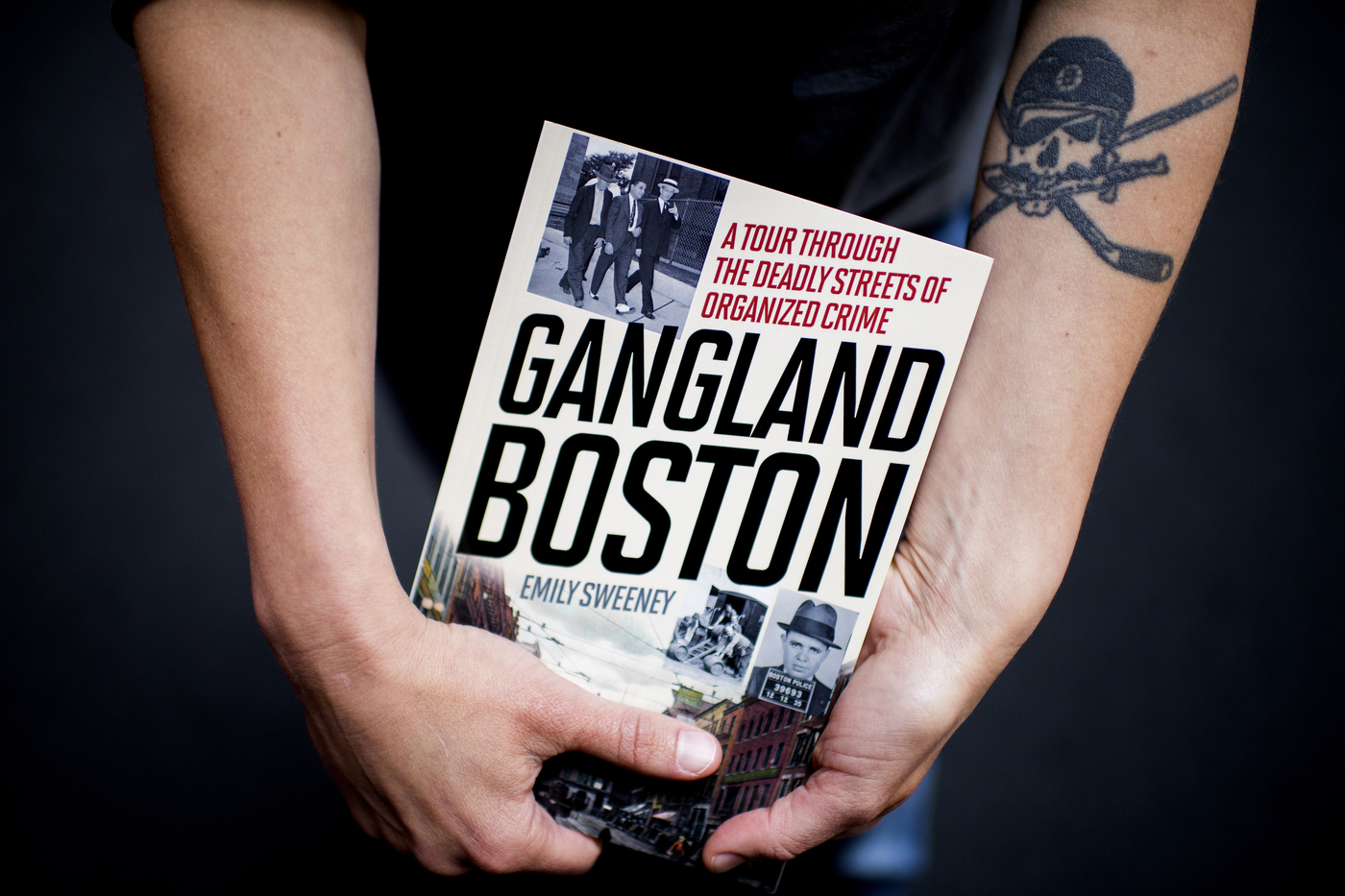You’ve heard of Whitey Bulger. This book maps the bloody history that helped him become king of Boston crime.

After a 16-year manhunt, a sensational trial, and a movie starring Johnny Depp, you’ve probably heard of James “Whitey” Bulger.
What you may not know much about is the long cast of characters with names such as Edward “Punchy” McLaughlin, Joseph “The Animal” Barbosa, and Stevie “The Rifleman” Flemmi, who set the stage for Bulger’s rise to the top of organized crime in Boston.
Telling their stories was the task taken on by Northeastern graduate Emily Sweeney, an award-winning Boston Globe reporter, who recently published Gangland Boston, her second book on organized crime in the city. The book, which is filled with vintage photographs, is billed as “a travel guide to the geography of Boston’s underworld.”
Sweeney comes naturally to the subject, having grown up in a working-class section of Dorchester on the edge of South Boston where Bulger reigned as the king of crime.

“I’ve always been a huge history buff, even as a kid,” said Sweeney. “There’s something fascinating about organized crime—learning about people and places that are never supposed to be chronicled in our history textbooks.”
Sweeney came to Northeastern as a pharmacy major—her eyes set on medical school—but another passion caused her to change those plans. Sweeney played defense for Northeastern hockey for four years and was a member of the nationally ranked 1997 women’s team that won the Eastern College Athletic Conference championships.
“My labs were interfering with hockey, so I switched to journalism—and I’m so glad that I did,” she said.
Sweeney’s co-op at The Boston Globe eventually landed her a full-time job at the paper, where she has been a reporter for 17 years.
The monster didn’t come out of nowhere
Although urban gangs have been around for centuries, it was Prohibition, which lasted from 1920 to 1933, that elevated many loose bands of street punks into the ranks of organized crime. This was certainly the case for the Gustin Gang, a band of Irish-American thieves from South Boston who established the Irish gang culture that eventually produce Bulger.
Frank and Stevie Wallace made a name for themselves as “tailboard thieves” —fearless and unscrupulous teenagers who hijacked delivery trucks when they stopped at intersections.
I’ve always been a huge history buff, even as a kid. There’s something fascinating about organized crime—learning about people and places that are never supposed to be chronicled in our history textbooks.
Emily Sweeney, Northeastern graduate
When the Prohibition laws took effect at the beginning of the Roaring Twenties, the brothers turned to “rum running” and quickly built an organization that included several boats for running illegal liquor from larger boats offshore to the South Boston waterfront.
By the end of the decade, the Gustin gang was big time. But for Frank Wallace, underworld success proved disastrous. In 1931, after hijacking a mafia booze shipment, Frank was gunned down at age 28 as he arrived for a meeting with the Italian Mafia in the North End.
Sweeney illustrates the reach of the Gustin Gang’s influence by noting that Wallace’s funeral procession included more than 200 cars, many of them with out-of-state plates.
But there was a ruthlessness to these people that belied their popularity as vigilantes against Prohibition. When Stevie Wallace was arrested for beating a police officer to the edge of death, he was acquitted after the state’s main witness disappeared. Two months later, two teenagers noticed tire tracks leading to the edge of a cliff of a flooded quarry in Quincy, Massachusetts. Police divers found a car 118 feet below the surface, which was occupied by the missing witness, dressed in a tuxedo and riddled with bullet holes.
One little-known fact that Sweeney uncovered in her research concerned the boxing career of Stevie Wallace, who made it to the 1920 Olympics.
“This was a bit of information even the Wallace family wasn’t aware of,” she said. “I was pretty surprised to find that one of the most notorious Prohibition-era gangs in Boston was led by a former Olympian.”
The Irish mob wars
In 1961 a gang war erupted between the city’s two top Irish gangs, the Winter Hill Gang in Somerville and a rival gang in Charlestown. It started with an insult to a girlfriend at a Labor Day party, and in a matter of weeks one gang leader was beaten unconscious, his rival’s car was booby-trapped with dynamite, and a third gang leader was gunned down in broad daylight in the middle of the town square.

The result: zero convictions.
Although the shooting took place before a hundred bystanders, there were no witnesses. The war was still in full swing six years later when Life magazine ran an eight-page article that put the number of gang assassinations at 43.
Sweeney came across another odd twist in the story. Following his acquittal, Alex Petricone moved to Hollywood, changed his name to Alex Rocco, and made a name for himself in show business. In 1972, he played the gangster Moe Green in The Godfather and went on to play gangsters and other unsavory characters in more than 100 TV shows and movies.
Meanwhile, his former Boston buddies were falling like dominoes.
Buddy McLean was gunned down by a member of the McLaughlin gang in 1965, and Edward “Punchy” McLaughlin was shot and killed while boarding a bus on his way to his brother’s murder trial. George McLaughlin was convicted, sentenced to death, and is still in prison in his 90s. Sweeney has been corresponding with him to gain details for her continuing research.
“This definitely seemed to be an example of disorganized crime,” she said. “Many of these shootings appeared to be the product of personal beefs.”
Whitey
One of the beneficiaries of this carnage was James “Whitey” Bulger. Although his rise to power was based on brains, icy charisma, and utter ruthlessness, there was also an element of luck.
My labs were interfering with hockey, so I switched to journalism—and I’m so glad that I did.
Emily Sweeney, Northeastern graduate
He was serving a nine-year prison sentence for bank robbery when the Irish Gang Wars wiped out most of his competition.
Sweeney said she devoted only a small portion of her book to Bulger because his vicious career has already been documented extensively in the news, books, and movies. She did say, however, that his presence loomed large in her formative years.
“Growing up, the Bulgers were just part of our life,” she said. “My father was a bartender and later owned a small restaurant in Southie. My mother was a clerk at the post office there and sold stamps to Whitey. We all came out of the same neighborhoods.”





